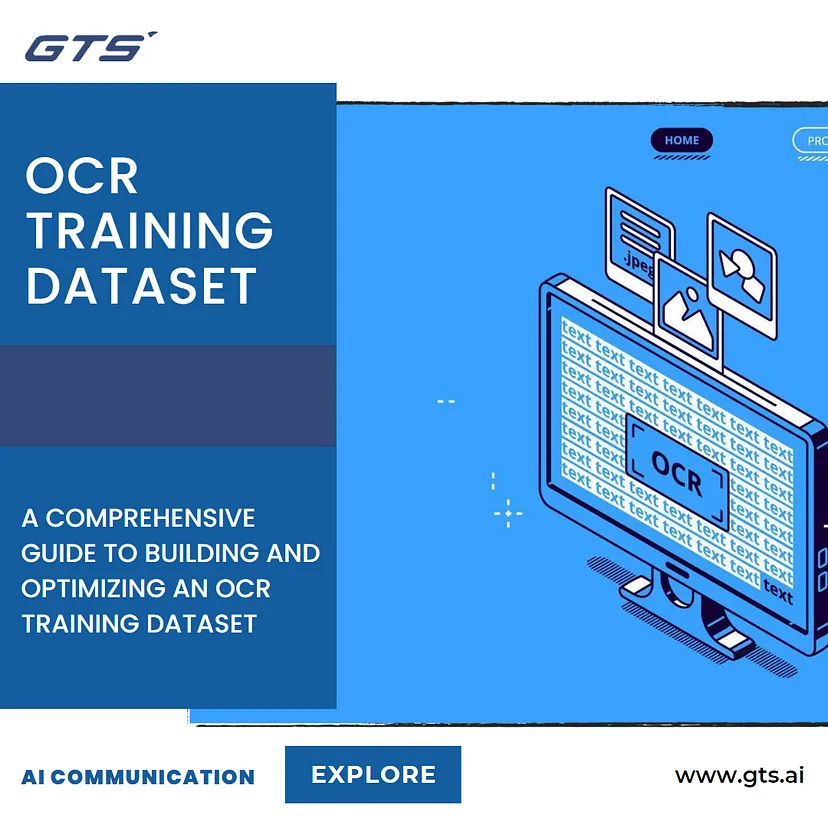In the rapidly evolving field of artificial intelligence (AI), machine learning (ML) has become a cornerstone technology, enabling systems to learn from data, identify patterns, and make decisions with minimal human intervention. A critical aspect of machine learning, particularly in text recognition and document analysis, is Optical Character Recognition (OCR). OCR technology converts different types of documents, such as scanned paper documents, PDFs, or images captured by a digital camera, into editable and searchable data. The quality of OCR datasets plays a pivotal role in the performance and reliability of these machine-learning models.
Understanding OCR Datasets
OCR datasets consist of a wide array of digitized text documents, including printed text, handwritten notes, and various font styles and sizes. These datasets serve as the training material for machine learning algorithms, teaching them to recognize and interpret text accurately. High-quality OCR datasets are characterized by their diversity, accuracy, and comprehensiveness, encompassing a range of languages, scripts, and document types.
The Role of OCR Datasets in AI Data Collection
AI data collection involves gathering relevant and representative data to train machine learning models. In the context of OCR, this means collecting diverse text samples that can cover different scenarios the model might encounter in real-world applications. The quality of these datasets directly influences the model’s ability to generalize from its training data to new, unseen documents.
1. Diversity of Data
A diverse OCR dataset includes a variety of document types, languages, fonts, and writing styles. This diversity ensures that the machine learning model can handle different text formats and styles, making it robust and versatile. For instance, an OCR model trained on a dataset containing only printed English text may struggle with handwritten notes or text in other languages. By including a broad spectrum of text types, the model can learn to recognize and process text more accurately, regardless of its source.
2. Accuracy and Precision
The accuracy of OCR datasets is paramount. High-quality datasets must be free from errors and inconsistencies. Incorrectly labeled data can mislead the training process, resulting in models that make frequent mistakes. Ensuring that the OCR datasets are meticulously annotated and validated is crucial for developing reliable machine-learning models. Precise data annotation helps the model understand the nuances of text recognition, improving its performance on complex tasks.
3. Comprehensive Coverage
Comprehensive OCR datasets cover a wide range of scenarios and conditions under which text recognition might be required. This includes varying lighting conditions, text orientations, background noise, and document quality. A model trained on such datasets can effectively handle real-world challenges, such as recognizing text from a low-resolution image or a document with a complex background. This comprehensive coverage enhances the model’s robustness and reliability in practical applications.
The Impact of Quality OCR Datasets on Machine Learning
High-quality OCR datasets have a significant impact on the effectiveness of machine learning models. Here are some key benefits:
Improved Accuracy and Efficiency
Quality OCR datasets lead to improved accuracy in text recognition tasks. When a model is trained on diverse, accurate, and comprehensive data, it learns to recognize text with high precision, reducing the likelihood of errors. This improved accuracy translates to more efficient document processing, saving time and resources in various applications, from automated data entry to digital archiving.
Enhanced Generalization
Machine learning models trained on high-quality OCR datasets can generalize better to new, unseen data. This means that the model can maintain its performance even when encountering documents that differ from those in the training dataset. Enhanced generalization is crucial for the practical deployment of OCR systems, as it ensures consistent performance across different use cases and environments.
Better User Experience
In applications where OCR technology is used, such as mobile scanning apps or automated form processing, the end-user experience is significantly improved when the underlying models are accurate and reliable. High-quality OCR datasets contribute to the development of models that can quickly and accurately extract information from documents, providing users with seamless and efficient solutions.
Challenges in OCR Data Collection
While the benefits of quality OCR datasets are clear, collecting and curating these datasets pose several challenges:
Data Diversity
Ensuring diversity in OCR datasets requires access to a wide range of documents, languages, and writing styles. This can be resource-intensive and time-consuming, especially when dealing with rare languages or unique document types.
Annotation Accuracy
Accurate annotation of OCR datasets is crucial but challenging. It requires meticulous attention to detail and often involves manual effort. Automated annotation tools can help, but they need to be carefully monitored to prevent errors.
Data Privacy and Security
Collecting OCR data from real-world documents raises concerns about privacy and security. Ensuring that sensitive information is protected and that data collection complies with privacy regulations is essential.
Conclusion
The importance of quality OCR datasets in machine learning cannot be overstated. They are the foundation upon which reliable and accurate OCR models are built. By ensuring that these datasets are diverse, accurate, and comprehensive, AI practitioners can develop robust models capable of handling a wide range of text recognition tasks. Despite the challenges in data collection and annotation, the benefits of high-quality OCR datasets in improving AI accuracy, efficiency, and user experience make the effort worthwhile. As the field of AI continues to advance, the emphasis on quality data will remain a critical factor in achieving successful and reliable machine learning outcomes.
